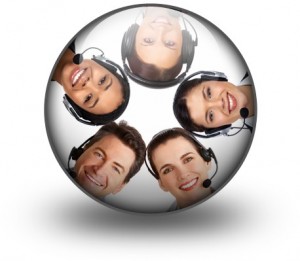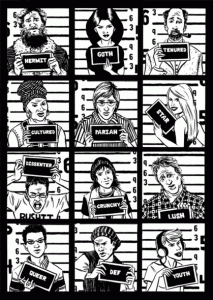Year 2010 in Video Review Series: What can these videos teach us about the social brain, conflict management and social media?
According to Socrates, “An unexamined life is not worth living.” It is this time again when we look back at the year gone by to see what we can learn from it. All the exciting happenings in neuroscience and the explorations of the brain, communication and social networks have rocked this Brain Alchemist’s boat, or, perhaps, lab, in 2010. There is much to learn about the human behavior in cyberspace (as in real life, for that matter), but one thing is clear: the Internet is a good conduit for human follies, passions and emotions. This makes it exciting, but also treacherous and ridden with conflicts and misunderstandings. How people navigate the rapid streams of social media after minor or major collisions is the subject of my Year 2010 in Video Review Series.
I’ve chosen videos as my review material because videos are more engaging and dynamic, and they have been big this year. These videos address a broad spectrum of issues, from business to social, from deeply personal to global. Most importantly, they provide lessons of social behavior online that are relevant to those involved in community management, online collaboration, conflict resolution, customer service, reputation management, crisis communication and PR. I will break them down into a series of posts to make our learning more digestible. As always, I want to know your thoughts and your take-aways.
Part I: From baking pizzas to brewing conflicts – Amy’s Baking Company
What do you do when a customer posts a negative review of your business on Yelp? The response from Amy Bouzaglo, the owner of Amy’s Baking Company & Bistro in Scottsdale, AZ, made many social media experts shake their heads in disbelief and disapproval. After a local blogger and Yelp reviewer Joel LaTondress posted a critical one-star review, he was accused by Amy Bouzaglo of working for the competition, and then called “ugly,” a “loser,” and a “moron.” Typically, that’s not the best way to handle customer complaints. But there is a caveat to the story. According to Shane Barnhill, who later sat down with the husband-wife team Samy and Amy Bouzaglo, all that negative publicity brought them more business.
So, what do we make of this story?
First, as in many conflicts, there are usually several stories developing simultaneously. As we read the analysis of this conflict at various social media outlets, we can see Amy cast either as a “villain” who exemplifies bad customer service and lack of understanding of social media or as a “victim” of an unfair review who “didn’t back down from a fight” and came to the defense of her brand even if her immediate reaction may have been harsh and inappropriate. Christina Baldwin said, “Words are how we think, stories are how we link.” In a recent study, brain scans of a speaker and listener showed their neural activity synchronizing during storytelling. When the conflict is played out in public, the audience chooses which story to side with. Telling your story in social media presents unique challenges because online communication is often disjointed and sporadic. The group dynamics are likely to influence the outcomes because your messages are filtered through other people’s eyes.
Second, just because social media interactions feel less personal, it doesn’t mean they are less emotional. In fact, the opposite may be true, due to the so-called online disinhibition effect. The typical social constraints that exist when we talk face to face are minimal in online communication. Anonymity, invisibility, lack of visual cues and accountability often cause people to say things in cyberspace that they wouldn’t say in person. The lack of direct feedback makes it easy to misunderstand and misinterpret other people’s words and actions. Rushed responses online can escalate conflicts.
Third, conflict can be a form of entertainment. This may sound bad, but it is our cultural and social reality: books, films, stories all have some kind of conflict as their driving force. Conflicts played out in social media run a higher chance of turning into entertainment for some. Our brains are driven by curiosity and the urge to search for novelty. When the brain anticipates something new and searches for patterns, it increases levels of the neurotransmitter dopamine, which is responsible for focused attention and more pleasurable experience. This can explain the beneficial effect of negative publicity. Some people will go and check out the place just because it was on the news.
Finally, when a brand has to give up rigid control over conversations happening in social media, it becomes crucial to exert even more control over the non-negotiable foundations of the brand, such as the quality of the product or service and the values the business stands by. People may be willing to justify and forgive one instance of emotional outburst against a customer, but if poor customer service becomes a pattern or the food is bad, no amount of publicity, positive or negative, will make those customers come back. The best way to protect your brand against unfair online attacks is to have loyal customers and evangelists that are willing to come to your defense.
Take-aways:
- Online reputation is about perceptions, not intentions. Assess and monitor the stories you and others communicate about your brand through social media.
- Don’t say online what you wouldn’t say to a person face-to-face.
- Dare to be a contrarian, but welcome different opinions and perspectives. Novelty, diversity and curiosity stimulate the brain. The magnetic pull of conflict can be used to boost creativity, innovation and change.
- Honor your loyal customers and evangelists. The strength, visibility and success of your brand depend on them. They are also your best defense against online attacks.
What tips do you have for managing online conflicts and controversies?
Related posts:
Video Review Series, Part 2: The Effective Video Apology “DOs” and “DON’Ts”
Video Review Series, Part 3: Leveraging Social Media for Crisis Communication
Video Review Series, Part 4: Humor in Conflict Is No Laughing Matter



